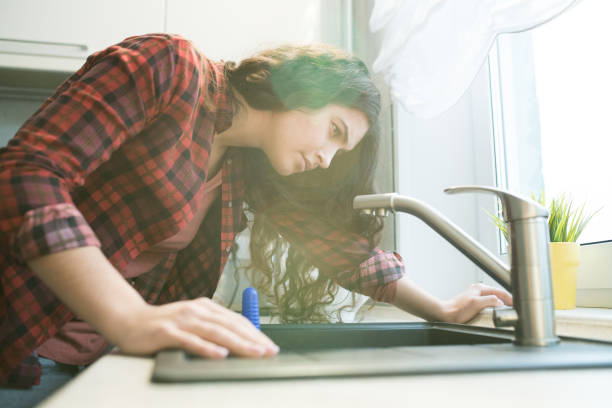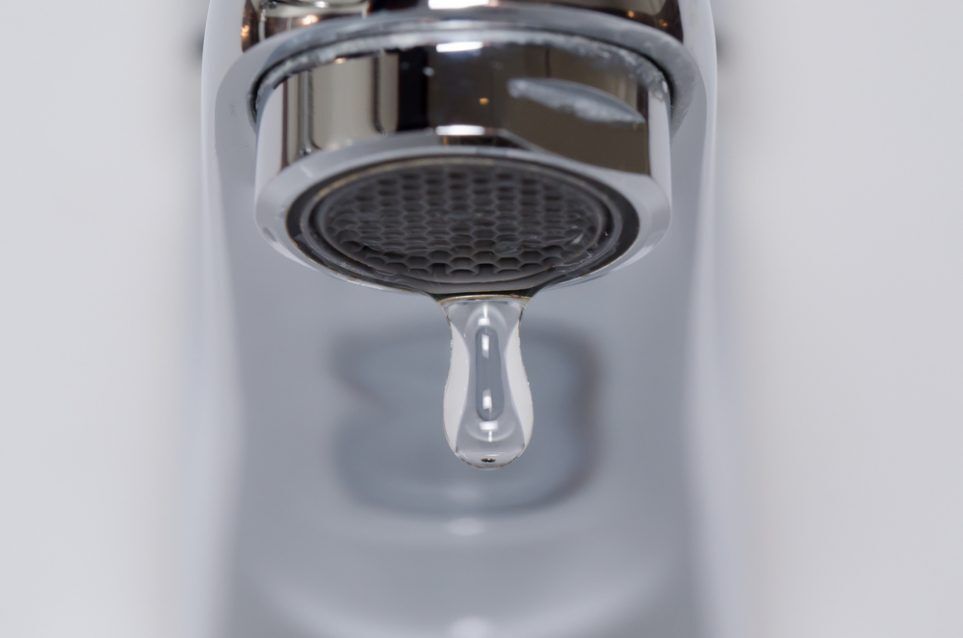Uncovering the Importance of Repairing a Faulty Faucet
Uncovering the Importance of Repairing a Faulty Faucet
Blog Article
How do you feel when it comes to Why Is It Important To Fix Your Leaking Tap/Faucet??

Trickling taps could look like a small aggravation, however their influence goes beyond just the annoyance of the audio. From drainage to sustaining unneeded economic costs and health and wellness risks, neglecting a leaking tap can cause various effects. In this post, we'll delve into why it's vital to resolve this typical home problem quickly and efficiently.
Waste of Water
Environmental Influence
Leaking taps contribute significantly to water waste. According to the Epa (EPA), a solitary faucet dripping at one drip per second can squander more than 3,000 gallons of water annually. This not just stress water resources however likewise influences ecosystems and wildlife dependent on them.
Step-by-Step Guide to Fixing a Dripping Tap
Tools Required
Prior to trying to take care of a trickling faucet, collect the needed tools, including an adjustable wrench, screwdrivers, replacement parts (such as washers or cartridges), and plumber's tape.
Common Tap Issues and Their Solutions
Identify the sort of tap and the particular issue causing the drip. Typical problems include damaged washers, corroded shutoff seats, or defective O-rings. Describe supplier guidelines or online tutorials for step-by-step advice on fixings.
Financial Expenses
Increased Water Bills
Past the environmental effect, dripping taps can inflate water costs substantially. The built up wastefulness gradually converts into greater utility expenditures, which could have been stayed clear of with prompt repairs.
Possible Property Damage
Moreover, prolonged dripping can lead to damage to components and surfaces bordering the faucet. Water buildup can create discoloration, rust, and even architectural issues if left neglected, causing added fixing prices.
Health and wellness Problems
Mold and Mildew Development
The consistent presence of moisture from a dripping faucet produces a suitable setting for mold and mildew and mildew development. These fungi not only jeopardize interior air top quality however additionally posture health threats, especially for individuals with breathing conditions or allergic reactions.
Waterborne Diseases
Stationary water in dripping faucets can end up being a breeding place for microorganisms and various other virus, boosting the risk of waterborne conditions. Contaminants such as Legionella microorganisms flourish in stagnant water, potentially resulting in major ailments when consumed or inhaled.
DIY vs. Expert Fixing
Benefits and drawbacks of Do It Yourself Repair Service
While some might attempt to repair a leaking tap themselves, do it yourself repair work come with their own set of challenges. Without appropriate knowledge and devices, do it yourself efforts can worsen the issue or cause incomplete repairs, prolonging the problem.
Advantages of Employing a Specialist Plumber
Employing a specialist plumber guarantees that the underlying reason for the leaking tap is resolved effectively. Plumbing professionals have the know-how and devices to diagnose and repair tap problems efficiently, conserving time and minimizing the danger of additional damage.
Environmental Obligation
Private Contribution to Conservation
Taking obligation for repairing dripping faucets straightens with broader efforts towards water conservation and ecological sustainability. Every person's actions collectively make a considerable influence on protecting precious resources.
Lasting Living Practices
By focusing on punctual repair work and embracing water-saving habits, people contribute to sustainable living methods that profit both present and future generations.
Preventive Measures
Normal Maintenance Tips
To prevent dripping faucets, execute regular upkeep such as cleaning aerators, checking for leakages, and changing worn-out parts immediately. In addition, consider mounting water-saving gadgets or updating to more effective components.
Value of Prompt Services
Resolving trickling taps as soon as they're seen avoids additional water wastefulness and potential damage, ultimately conserving both water and cash in the long run.
Impact on Building Value
Understanding of Well-Maintained Property
Keeping a home in good condition, including attending to upkeep problems like dripping taps, boosts its viewed worth and worth amongst prospective purchasers or renters.
Influence on Resale Worth
Features with properly maintained plumbing components, consisting of faucets, command higher resale values in the real estate market. Resolving leaking faucets can contribute to a favorable impact during residential property evaluations and negotiations.
Verdict
Attending to a leaking tap goes beyond plain benefit; it's a necessary step toward preserving water, lowering economic expenses, and safeguarding health and home. Whether with DIY repair work or specialist support, acting to fix trickling taps is a small yet impactful way to advertise responsible stewardship of sources and add to a much healthier, more lasting future.
How to Fix a Leaky Faucet: Step-by-Step Repair Guide
A leaky faucet may seem like a simple annoyance, but if it's not fixed promptly, that leak could cost hundreds to potentially thousands. From water damage to mold, mildew, and high water bills, even a tiny leak can be catastrophic if left unattended. Damage like this can even affect the overall value of your home, so it's important to take the right approach for leaky faucet repair. You may need the help of a plumber in some cases, but we've got a few tips you can try on how to fix a leaky faucet before calling the pros.
Four Faucet Types
When you're learning how to fix a leaky faucet, the first step is knowing what kind of faucet you're working with! There are four common types.
Cartridge Faucets
Cartridge faucets come in one- or two-handled varieties. In one-handled cartridge faucets, hot and cold water combines in a single cartridge. In the two-handled versions, hot and cold water are controlled separately and mixed in the faucet.
Ball Faucets
Ball faucets have a single lever you push up and down to adjust the pressure and rotate to change the temperature. A slotted metal ball controls the amount of water allowed into the spout.
Compression Washer Faucets
They're the oldest type of faucet, but they're still used in many homes — especially older ones. Compression faucets have two separate handles that, when turned, raise or lower the washer that seals a water valve. This valve stops water from flowing through the faucet when it is turned off.
Disc Faucets
Disc faucets rarely need to be repaired due to their maintenance-free design. The water flow is controlled by two discs — the upper one raises and lowers against a fixed lower disc, creating a watertight seal. If your disc faucet starts leaking, you may need to replace the seals or clean residue buildup from the inlets.
Fixing a Leaky Faucet
Step 1: Turn Off the Water
Whether you're learning how to fix a leaky bathtub faucet or how to fix a leaky kitchen faucet, always turn off the water supply to your working area when you're fixing a leak. The last thing you want is a flood added to your list of things to fix.
Look for the shutoff valves below your sink or around the tub and turn them clockwise to stop the water flow. If your faucet doesn't have shutoff valves, you may need to turn off the water for the whole house. Check to make sure it's off by turning the faucet on. If nothing comes out, you're ready to start the repair.
Step 2: Take Apart the Faucet
How you disassemble your faucet depends on the type of fixture you have. You can use a flathead screwdriver to remove the caps on top of the handle or handles for cartridge and compression faucets. Inside, you should see handle screws. Unscrew these with a screwdriver to remove the handle.
Disc- and ball-style faucets will typically have an inlet screw near the handle, and removing that will reveal the interior of the faucet.
Detach the Valve Stem
For cartridge- and compression-style faucets, you'll see the inner valve stem or cartridge once you remove the faucet handles. If you have a compression faucet, unscrew the brass valve stem. If you have a cartridge faucet, pull out the cartridge. If your cartridge has been in place for a while, it may require some tools or extra force to remove it due to mineral deposits.
Examine and Replace Parts
Once you've removed the parts, check them out to confirm what needs to be replaced. You may see corroded rubber washers, O-rings, stems, or cartridges. On a ball-style faucet, check the seats and springs for damage.
If you need to repair a leaky disc faucet, check the inlet and seals on the lower disc.
Once you determine what parts must be replaced, visit your local hardware store. Bring the damaged parts with you to ensure you can purchase the correct components to replace them.
Clean Valves and Faucet Cavity
If you've removed a stem or cartridge, you may notice mineral buildup in the faucet's threads. Use white vinegar to clean the valve seat by soaking it for a few minutes, then scrub it away with a soft toothbrush and rinse with warm water. You can also clean the interior of the faucet in the same way.
Reassemble the Faucet
Once your faucet is cleaned and the required parts have been replaced, it's time to reassemble it. Put the pieces back together and slowly turn the water supply back on. Doing this slowly is crucial because too much initial water pressure can damage the new hardware you've just installed.
https://homewarranty.firstam.com/blog/how-to-fix-leaky-faucet

As a fervent person who reads about How to Fix a Dripping or Leaky Faucet , I think sharing that topic was smart. Appreciated our posting? Please share it. Let someone else find it. We value your readership.
Report this page